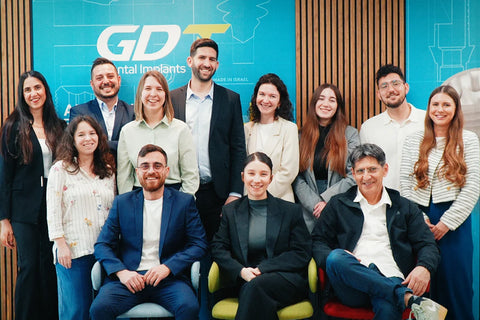Which Dental Implant Surface Treatment is more effective?
In the search to improve the success rate of dental implants, surface treatments such as SLA (Sandblast, Large grit, Acid-etch) and RBM (Resorbable Blast Media) have emerged as frontrunners. Each implant surface modification employs a distinct approach to increase the implant's surface area, thereby improving osseointegration—the crucial process by which the bone integrates with the implant. While SLA treatment involves a combination of mechanical blasting and chemical etching to create micro-cavities that mimic the body's natural structures for enhanced cellular adhesion, RBM treatment relies on the physical alteration of the implant surface using biocompatible, resorbable particles to promote bone cohesion.
Determining the more effective dental implant surface treatment hinges on understanding these processes in detail, including their biological and mechanical properties, and their impact on the long-term success of dental implants
S.L.A - Stands for Sandblast, Large grit, Acid-etch.
SLA dental Implant surface treatment seeks to improve the dental implant's properties, yet to keep its rudimentary qualities intact.
SLA Treatment Process:
The implant's surface is blasted with corundum particles of aluminum oxide, acquiring micro-roughness.
The next step - dipping the implant into a high-temperature mixture of sulfuric & hydrochloric acids, the result is: micro-cavities of 2-4 microns will form.
SLA biological point of view:
Just like in the small intestine, where mucosa cells contain microvilli which are tiny hair-like projections, that increase the surface area of the small intestine allowing more area for nutrients to be absorbed – A similar biological mechanism is achieved by SLA implant surface treatment.
By increasing the surface area of the implant, we allow for better osteoblast proliferation and cellular adhesion, thus increasing the bone to implant contact, resulting in an excelled process of osseointegration.
RBM – Stands for Resorbable Blast Media.
The core idea underlying RBM dental implant surface treatment is to generate a rougher implant surface. Rougher surface increases the overall surface area of the implant, allowing for a more sufficient bone to implant cohesion and retention characteristics, thus increasing the osseointegration of the implant.
RMB Treatment Process:
Achieved by “high-speed particle blasting” using suitable & resorbable hardened Beta-TriCalcium Phosphate particles.
Following the mechanical abrasion, leftover calcium particles cleaned off by etching the surface with organic acid of low concentration, leaving no residue and avoiding the implant’s titanium surface refurbishment.
RBM Mechanical & Biological Properties:
Successful osteogenesis around the implant is obtained due to the created homogenous pore diameter and uniform surface. bTCP (Beta-TriCalcium Phosphate) is a resorbable, biocompatible substance used in alloplastic bone grafts. bTCP does not transfix deeply into the implant's surface and does not lodge inside the physically created crater.
In case there is bTCP leftover residue on the implant surface, it adds to the osteogenic value of the implant due to the osteoconductive properties it possesses, allowing it to be completely resorbed and replaced by new bone cells.
Conclusion:
In conclusion, both SLA and RBM surface treatments represent significant advancements in dental implant technology, each with its unique set of benefits and drawbacks. The SLA treatment, characterized by its sandblasting with corundum particles and acid-etching process, creates micro-roughness and micro-cavities that mimic the body's natural structures. This not only enhances osteoblast proliferation and cellular adhesion but also accelerates the osseointegration process, making it a highly effective treatment for improving bone-to-implant contact. On the other hand, RBM treatment, which employs high-speed particle blasting with resorbable Beta-TriCalcium Phosphate, offers a rougher surface that promotes bone cohesion and retention. The resorbability of bTCP particles adds to the osteogenic value of the implant, aiding in the successful osteogenesis around the implant.
However, each implant surface has its considerations. SLA's aggressive chemical etching process, while effective in increasing surface area, requires careful control to preserve the implant's integrity. Meanwhile, RBM's reliance on bTCP particles necessitates thorough cleaning to prevent any adverse effects from residual materials. Ultimately, the choice between SLA and RBM surface treatments should be guided by the specific clinical scenario, the patient's bone quality, and the desired outcomes. Both treatments offer promising results, yet their effectiveness can be optimized only when applied with a thorough understanding of their properties and the biological mechanisms they aim to enhance.





